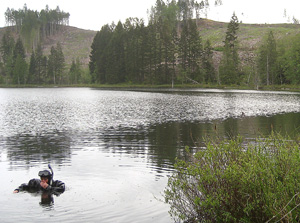Conservation
 Recent adaptive radiations comprise a complex of populations that can offer special insight into the processes that generate biodiversity. The loss of unique, or scientifically important members of such radiations undermines the ability to make comparisons among divergent populations, thereby devaluing the entire radiation. For this reason, it is essential to carefully plan and apply strategies that protect either entire adaptive radiations or evolutionarily significant units that capture critical variation. The protection of critical populations within the threespine stickleback post-glacial radiation is particularly difficult for two reasons. The first is simply that threespine stickleback are very abundant, and thus a great many populations have to be surveyed in order to identify the critical ones. The second reason is that anthropogenic change is causing rapid, contemporary evolution that tends to result in a loss of extreme phenotypes, and hence a loss of the population features we wish to preserve even though population extinction has, thus far, been relatively rare. We are currently engaged in an effort to develop a proactive protection strategy for populations of threespine stickleback in both southern British Columbia and the Cook Inlet region of Alaska.
Recent adaptive radiations comprise a complex of populations that can offer special insight into the processes that generate biodiversity. The loss of unique, or scientifically important members of such radiations undermines the ability to make comparisons among divergent populations, thereby devaluing the entire radiation. For this reason, it is essential to carefully plan and apply strategies that protect either entire adaptive radiations or evolutionarily significant units that capture critical variation. The protection of critical populations within the threespine stickleback post-glacial radiation is particularly difficult for two reasons. The first is simply that threespine stickleback are very abundant, and thus a great many populations have to be surveyed in order to identify the critical ones. The second reason is that anthropogenic change is causing rapid, contemporary evolution that tends to result in a loss of extreme phenotypes, and hence a loss of the population features we wish to preserve even though population extinction has, thus far, been relatively rare. We are currently engaged in an effort to develop a proactive protection strategy for populations of threespine stickleback in both southern British Columbia and the Cook Inlet region of Alaska.